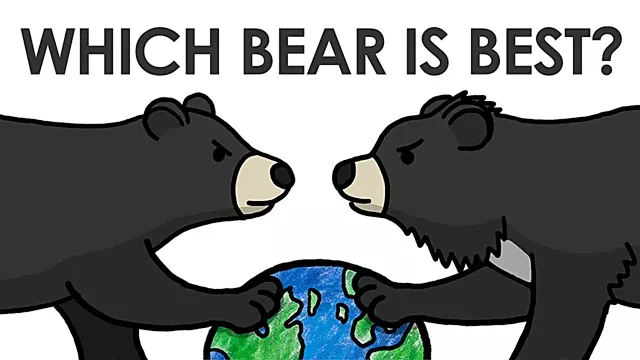2016-06-21
[public] 2.81M views, 39.4K likes, dislikes audio only
Why do some species flourish and others falter? Sometimes it just comes down to luck. A big thank-you to our supporters on https://www.patreon.com/MinuteEarth :
- Today I Found Out
- Maarten Bremer
- Jeff Straathof
- Mark Roth
- Tony Fadell
- Muhammad Shifaz
- 靛蓝字幕组
- Alberto Bortoni
- Valentin
- Antoine Coeur
___________________________________________
FYI: We try to leave jargon out of our videos, but if you want to learn more about this topic, here are some handy keywords to get your googling started:
- Bering land bridge: an ancient land bridge that connected Asia and North America at various times during the Quaternary glaciation, allowing Homo sapiens and other species migrations.
- The Holocene extinction: (also referred to as the Sixth extinction or Anthropocene extinction) is the ongoing extinction event of species during the present Holocene epoch (since around 10,000 BCE) mainly due to human activity. The Holocene extinction includes the disappearance of large land animals known as megafauna, starting between 9,000 and 13,000 years ago, the end of the last Ice Age.
- Atlatl (spear-thrower): is a tool that uses leverage to achieve greater velocity in dart-throwing.
- Bile bears: sometimes called battery bears, are bears kept in captivity to harvest their bile, a digestive fluid produced by the liver and stored in the gallbladder, which is used by some traditional Chinese medicine practitioners, though there is no evidence that bear bile has any medicinal effect, and no plausible mechanism by which it might work.
Species featured in this video:
- American black bear (Ursus americanus)
- Asian black bear (Ursus thibetanus)
- Black-footed Ferret or American polecat (Mustela nigripes)
- Steppe polecat (Mustela eversmanii)
- Humans (Homo Sapiens)
- Prairie dogs (genus Cynomys)
___________________________________________
Credits (and Twitter handles):
Script Writer: David Goldenberg (@dgoldenberg)
Script Editor: Emily Elert (@eelert)
Video Illustrator: Ever Salazar (@eversalazar)
Video Director: Emily Elert (@eelert)
Video Narrator: Henry Reich (@MinutePhysics)
With Contributions From: Alex Reich, Kate Yoshida, Peter Reich and Rachel Becker
Music by: Nathaniel Schroeder: http://www.soundcloud.com/drschroeder
Image Credits:
Mustela nigripes - USFWS Mountain Prairie
https://www.flickr.com/photos/usfwsmtnprairie/5244106245/
Mustela eversmanii - Andrei Kotkin (used with permission)
Ursus americanus - Ryan E. Poplin
http://flickr.com/photos/27446776@N00/668275432
Ursus thibetanus - Guérin Nicolas
https://en.wikipedia.org/wiki/File:Ursus_thibetanus_3_(Wroclaw_zoo).JPG
_________________________________________
Like our videos?
Subscribe to MinuteEarth on YouTube: http://goo.gl/EpIDGd
Get early, exclusive access to our videos on Vessel: https://goo.gl/hgD1iJ
Support us on Patreon: https://goo.gl/ZVgLQZ
Also, say hello on:
Facebook: http://goo.gl/FpAvo6
Twitter: http://goo.gl/Y1aWVC
And find us on itunes: https://goo.gl/sfwS6n
___________________________________________
References:
Schieck, B., McCown, W. (2014). Geographic distribution of American black bears in North America. Ursus, 25-1(24-33). Retrieved from http://www.bearbiology.com/fileadmin/tpl/Downloads/URSUS/Vol_25_1_/Scheick_and_McCown_2014_Ursus.pdf
Pappas, S. (2014).Humans Blamed for Extinction of Mammoths, Mastodons & Giant Sloths. LiveScience. Retrieved from: http://www.livescience.com/46081-humans-megafauna-extinction.html
Feng, Y., Siu, K., Wang, N., Ng, K., Tsao, S., Nagamatsu, T., Tong, Y. (2009). Bear bile: dilemma of traditional medicinal use and animal protection. Journal of Ethnobiology and Ethnomedicine, 5:2. Retrieved from http://www.ncbi.nlm.nih.gov/pmc/articles/PMC2630947/
Biggins, D., Hanebury, L., Miller, B., Powell, R. (2011). Black-footed ferrets and Siberian polecats as ecological surrogates and ecological equivalents. Journal of Mammalogy, 92(4): 710-720. Retrieved from https://www.fort.usgs.gov/sites/default/files/products/publications/22786a/22786a.pdf
https://www.patreon.com/minuteearth
/youtube/channel/UCeiYXex_fwgYDonaTcSIk6w
https://www.patreon.com/minuteearth
/youtube/video/4DF94Wvtekk

